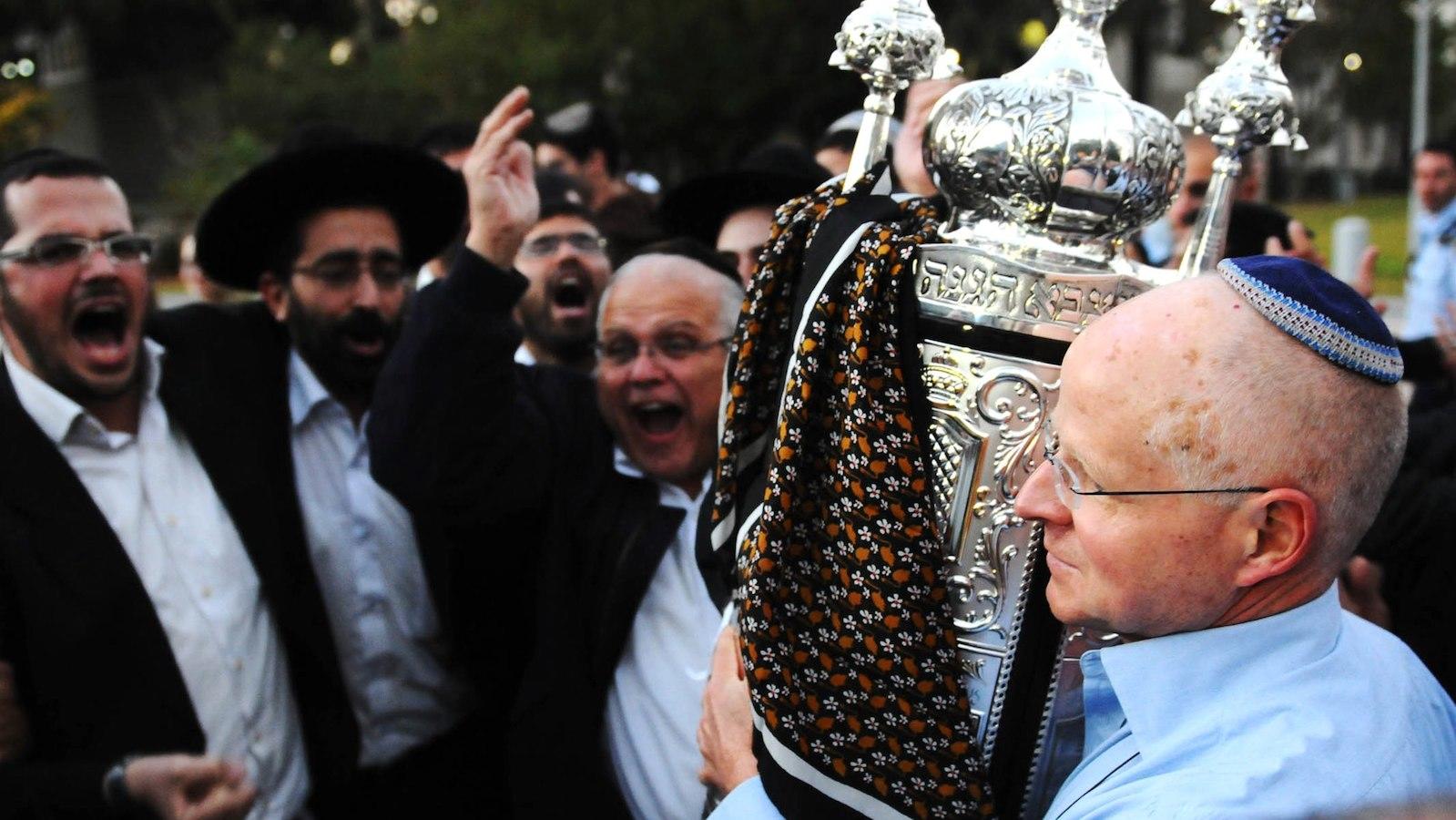The root k-d-sh (ק-ד-שׁ) the source for the Hebrew word kedushah (קדושׁה), or holiness, occurs an intimidating 9,324 times in the Babylonian Talmud. Yet despite (or perhaps because of) the frequency with which this root appears, it is an especially difficult task to pin down its meaning.
K-d-sh rears its head in discussions of sacrifices (where it represents highly regarded offerings reserved generally for those in a state of priestly purity), marriage (as part of the still-used formula by which a marriage is put into effect), prayers and martyrdom, among other things. It is used to refer to God, the Temple in Jerusalem, and the Hebrew language. For the modern Jew trying to grasp what holiness might have meant for the great rabbinic sages, the diversity of uses for this verbal root can prove to be a frustrating obstacle.
The (aptly named) 20th-century rabbinic scholar Max Kadushin offered an attempt to make sense of holiness in the rabbinic context in his work Worship and Ethics. According to his schema, holiness for the rabbis came in essentially two sorts, hierarchical holiness and nonhierarchical holiness. Hierarchical holiness was that holiness associated with people, places, days, and objects. The defining characteristic of this hierarchical holiness is, as it name implies, the possibility of declaring, within each of these categories, one item to be of greater holiness than another. Consider, for example, the Mishnah in Tractate Megillah of the Babylonian Talmud (25b-26a):
Residents of a city who sold the city square may buy with its money (i.e. the profit from the sale of the square) a synagogue; [if they sold] a synagogue, [they may buy] an ark…[if they sold] scrolls [of the prophets], [they may buy] a Torah scroll. But if they sold a Torah scroll, they may not buy scrolls [of the prophets]…[if they sold] an ark, [they may not buy] a synagogue, [if they sold] a synagogue, [they may not buy] a city square…
This Mishnah clearly defines certain objects related to prayer as being holier than others. But on what basis is the relative holiness of these items determined?
With your help, My Jewish Learning can provide endless opportunities for learning, connection and discovery.
The hierarchical arrangement of people, places, days, and objects based on holiness, Kadushin explains, is based primarily on perceived closeness to God. Because the Torah is presumed to be given directly by God, a Torah scroll has a higher level of kedushah than scrolls of the prophets, which are a step removed from the direct revelation at Sinai. Similarly, the ark is subject to stricter holiness rules because it is deemed as being closer to God than the synagogue as a whole. This hierarchical holiness, according to Kadushin, is a “felt quality alone” that can “neither be described nor demonstrated.” There is nothing inherent to the object of holiness that makes it holy; rather, this holiness is essentially arbitrary.
In the case of this particular Mishnah passage, the disconnect between the perceived holiness of something and its inherent qualities is especially acute. The talmudic discussion on this passage explains that the opinion expressed in the Mishnah is actually not the view; although the majority agree with the basic premise of this holiness ranking, they disagree regarding the status of the city square. The author of this Mishnah feels that the city square may be sold only for the purpose of purchasing something with a higher level of kedushah, whereas the majority argue that no such restrictions apply to the square because no kedushah is attached to the square. On what basis does the author of the Mishnah believe that the square is holy? According to the Talmud, the reason is that people pray there on certain occasions. The majority say that since this is not a frequent occurrence, it is not considered consequential.
What is striking about this exchange is that the use of the square for public prayer is both necessary and sufficient for ascribing holiness to it. (Even the majority agree with this point; they simply disagree about the amount of prayer necessary to make it holy, not with the idea that humans’ prayers could make it holy.) Thus, an object imbued with hierarchical holiness is holy by association; some fortunate occurrence converts what would otherwise be a mundane place, or day, or person, into an item of religious respect.
Nonhierarchical holiness, on the other hand, is intimately linked with morality, observance of Jewish law, and acts of chesed, loving kindness—as Kadushin writes, it is achieved only through “effortful personal conduct.” While a vessel used in the Temple service might have a certain level of holiness attached to it because of its use in the performance of required rituals, only people are actually commanded to be holy (famously in Leviticus 19:2). This command is not an order somehow to be like the holy vessel, but rather, it is a directive to act in such a way so as to be considered holy. Thus, when one observes commandments, acts in such a way so as to imitate God’s acts of loving kindness, or avoids those things that are spiritually defiling (most prominently murder, adultery, and idolatry), one achieves this kind of nonhierarchical holiness.
This nonhierarchical holiness is very different from its hierarchical counterpart. An object, we saw, is holy because it is somehow close to God; as a result of its being close to God it acquires the status of holiness. Israel, on the other hand, is commanded to be holy in order to be considered God’s people—holiness is a prerequisite of closeness to the divine.
The contrast between these two forms of holiness is especially apparent if we think about the concept of tum’ah. Kadushin maintains that tum’ah, which roughly means “impurity” with regard to cultic rituals, is the opposite of hierarchical holiness. Thus, an item that is cultically impure is unfit to be brought close to God. Interestingly, the notion of tum’ah is also used in talmudic discussions of moral requirements. For example, in Shqvuot 7b, three verses from the Torah, all of which contain the root for cultic impurity, are used to associate the notion of tum’ah with idolatry, adultery, and murder, the three cardinal sins of Judaism (those singled out as the only acts for which one should be martyred rather than agree to participate in them). While these are not the types of things normally associated with ritual impurity, here we see a notion of immorality as being defiling.
As one might expect, however, ritual (hierarchical) tum’ah and moral (nonhierarchical) tum’ah are very different. Kadushin notes that, while the pursuit of hierarchical holiness does not rule out any encounter with ritual tum’ah (the need to have a pure vessel for the Temple service does not mean one cannot own an impure vessel for a bouquet of flowers in your home!), the pursuit of nonhierarchical holiness allows no place for moral impurity. One cannot seek to be holy by giving to charity while at the same time engaging in murder. Thus, the standards for moral holiness are far more exacting (if perhaps less detailed) than those for ritual holiness.
Recognizing the dichotomy of hierarchical (ritual) holiness and nonhierarchical (moral) holiness helps us understand what the rabbis meant by the term kedushah. Yet there is always a danger in separating out the ritual from the moral—the danger of seeing the two as wholly unrelated. Kadushin is quick to point out that while there are important distinctions between the two, there is also an important overlap, since the very act that imbues an object with hierarchical holiness is a mitzvah, thus increasing the nonhierarchical holiness of the mitzvah-performer. After all, to return to the case of our Mishnah from Megillah, the act of prayer that might make the city square holy is an obligation that brings the person praying closer to God and makes her or him holier.
The ancient rabbis’ notion of holiness was clearly a different holiness from that of the Bible. While the rabbis maintained a biblical sense of cultic purity and impurity, it became tied to a human-centered theology of mitzvot, imitation of God, and abstention from morally defiling acts. In so doing, they gave to humans the power not only to make themselves holy, but also to fulfill the mitzvah of kiddush hashem—the power to sanctify God’s name in the world.
ark
Pronounced: ark, Origin: English, the place in the synagogue where the Torah scrolls are stored, also known as the aron kodesh, or holy cabinet.
Talmud
Pronounced: TALL-mud, Origin: Hebrew, the set of teachings and commentaries on the Torah that form the basis for Jewish law. Comprised of the Mishnah and the Gemara, it contains the opinions of thousands of rabbis from different periods in Jewish history.
Torah
Pronunced: TORE-uh, Origin: Hebrew, the Five Books of Moses.
chesed
Pronounced: KHEH-sed, Origin: Hebrew, lovingkindness, compassion.
Mishnah
Pronounced: MISH-nuh, Origin: Hebrew, code of Jewish law compiled in the first centuries of the Common Era. Together with the Gemara, it makes up the Talmud.
mitzvah
Pronounced: MITZ-vuh or meetz-VAH, Origin: Hebrew, commandment, also used to mean good deed.



